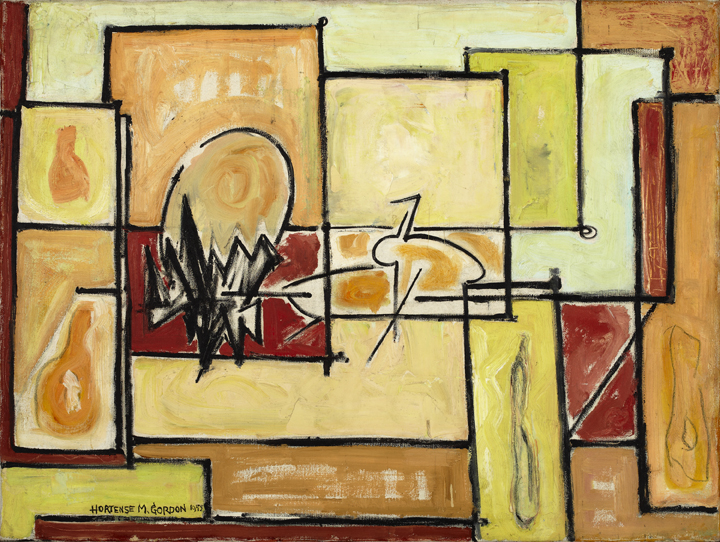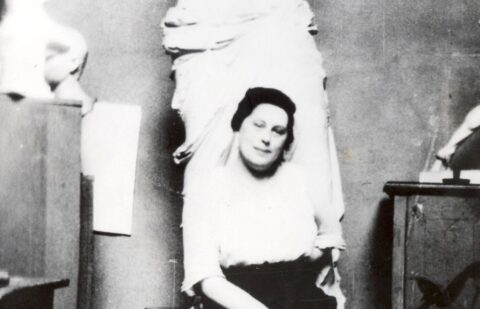Hortense Gordon (1886–1961) was an important figure in Canadian modern art. Trained at the Hamilton Art School, Gordon spent her early career making ceramics and painting traditional landscapes, but it was her later embrace of abstraction that defines her legacy.
Gordon returned to teach art at the Hamilton Technical and Art School and married fellow teacher John Sloan Gordon. Each summer the couple travelled widely, visiting galleries and filling their sketchbooks with new artistic ideas. While her husband preferred more traditional, academic styles, Gordon was drawn to the avant-garde. Inspired by what she saw in Europe and the United States, she began experimenting with more modern styles—including abstraction in the 1940s.
Gordon’s journey as an artist reflected broader changes in 20th-century art. Towards the New follows this transformation—from Gordon’s early landscapes to her later embrace of abstract art. Throughout her career, she engaged new ideas and followed contemporary approaches to artmaking in both her teaching and her own practice. Despite resistance from her husband and the art establishment, Gordon taught modern design and abstract principles for years before fully adopting them herself. Celebrated American abstract expressionist teacher, Hans Hofmann, wrote that Gordon was “an extraordinary person…always directed towards the future and progress in Life and Art.”
In 1953, Gordon was a founding member of the influential artist collective, Painters Eleven, who were committed to advancing abstract art in Canada. Gordon valued the group’s shared energy and experimentation with abstraction. Buoyed by their support, Painters Eleven helped validate her move toward abstraction at a time when it was still controversial in Canada. Drawn from the RMG’s Permanent Collection, this exhibition highlights Hortense Gordon’s stylistic transformations and tireless pursuit of the new, celebrating her lasting impact on Canadian art.

